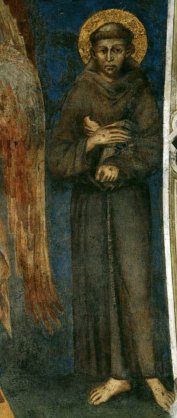
An extended project: the life of St Francis of Assisi, followed
by a look at the Franciscans in England.
Useful reference works are Francis of
Assisi by William R Cook, The Franciscans in England by
John Moorman, and, above all, The Life of St Francis by Saint
Bonaventure. I have also included extracts from the first biography of
St Francis by Thomas of Celano, and from the 14th century text The
Little Flowers of St Francis.
I
am starting here with the childhood of Francis.
He was born in Assisi in late 1181 or early 1182. His family was
wealthy. His father, Pietro di Bernardone dei Moriconi, was a silk
merchant and his mother was a French noblewoman. Francis was born when his
father was away in France, and was baptised Giovanni, but it seems that
his father was not keen on this, and on his return renamed him
Francesco. After all, the childís mother was French, and his fatherís
business was very successful in France.
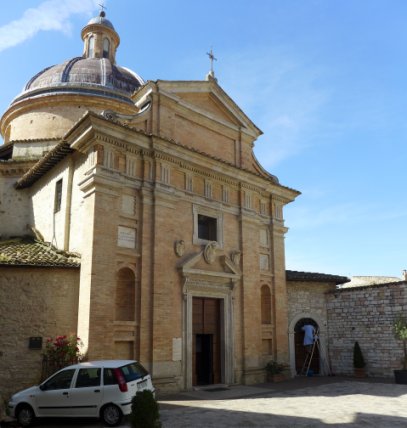
I will return to the Chiesa Nuova on the next page.
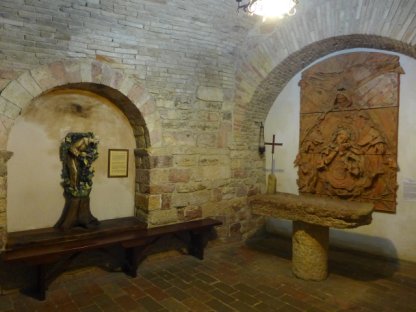
A somewhat unconvincing legend is attached to the actual birth of Francis: an attempt to mark him out as the second Christ, Franciscus alter Christus. It tells us that his mother, while in labour, was unable to deliver him. A mysterious figure appeared and told her that birth could only happen in a stable. She crossed the street, entered a stable in which there was an ox and an ass, and the birth was accomplished.
The stable has now become a small church, San Francesco Piccolino, shown below.

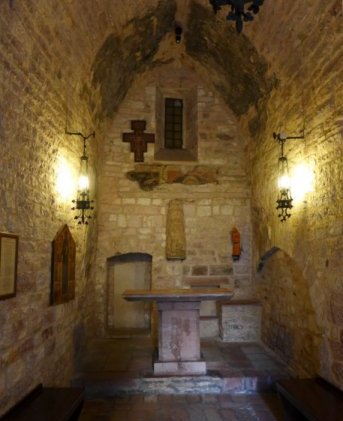
Below is the cathedral of Assisi, San Rufino, dating from 1140. It became an important location for Francis, who frequently preached here. He was baptised here in 1182: the font that was used is still here.
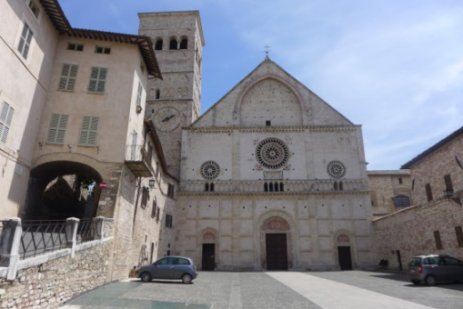
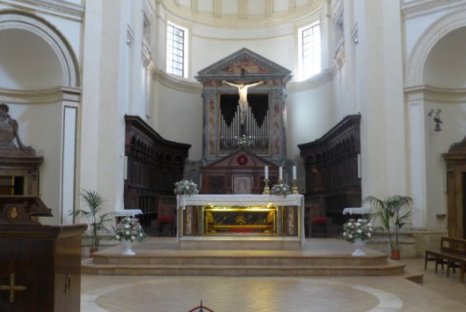

2: Some important locations
3: San Damiano
4: The early years
5: Legends of a lifetime
6: The Stigmata
7: The Death of Francis
8: The Poor Clares
9: The Frari, Venice
10: Santa Croce Florence
11:San Francesco Montefalco
12: The Franciscans in England 1
13: The Franciscans in England 2